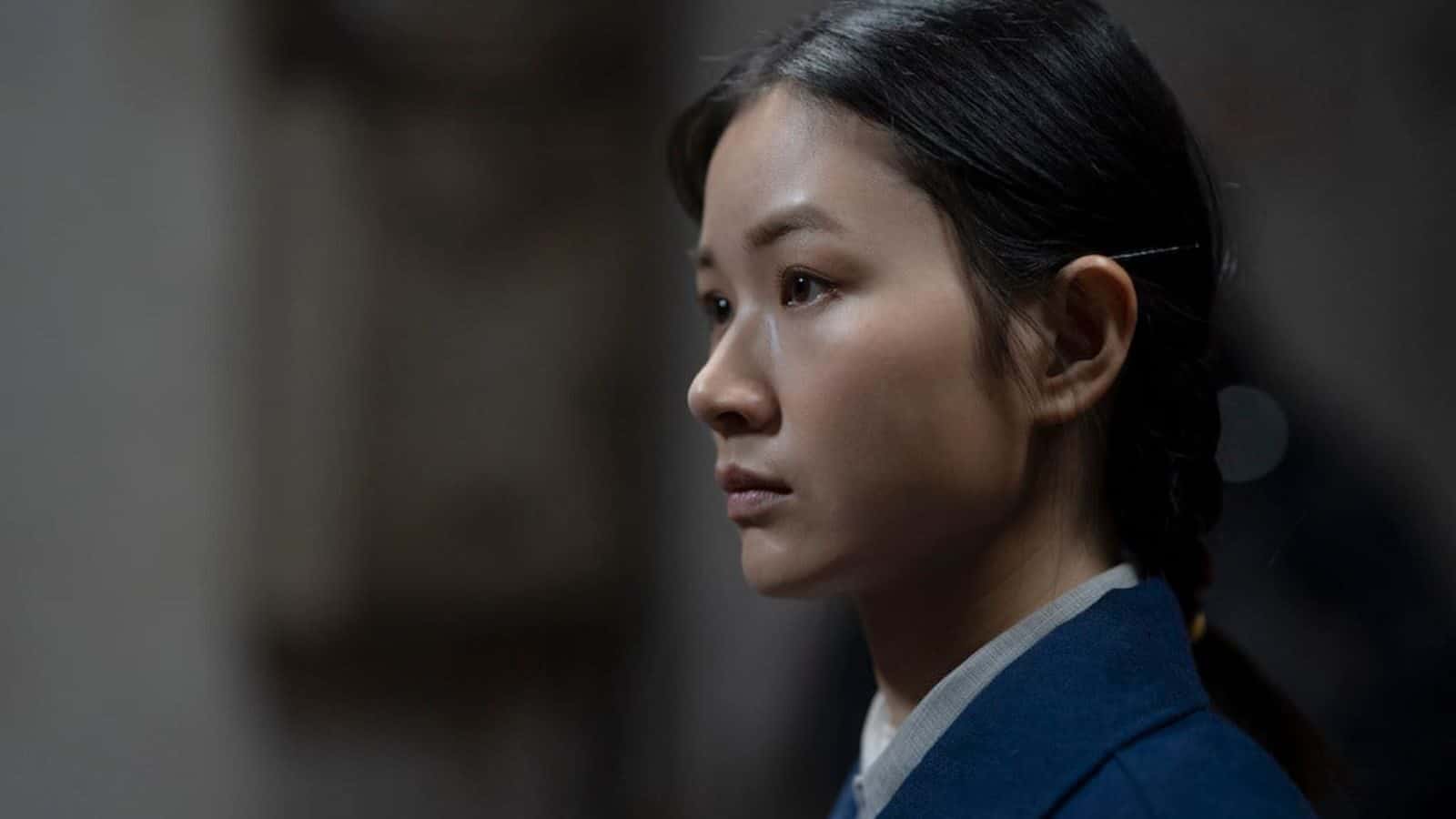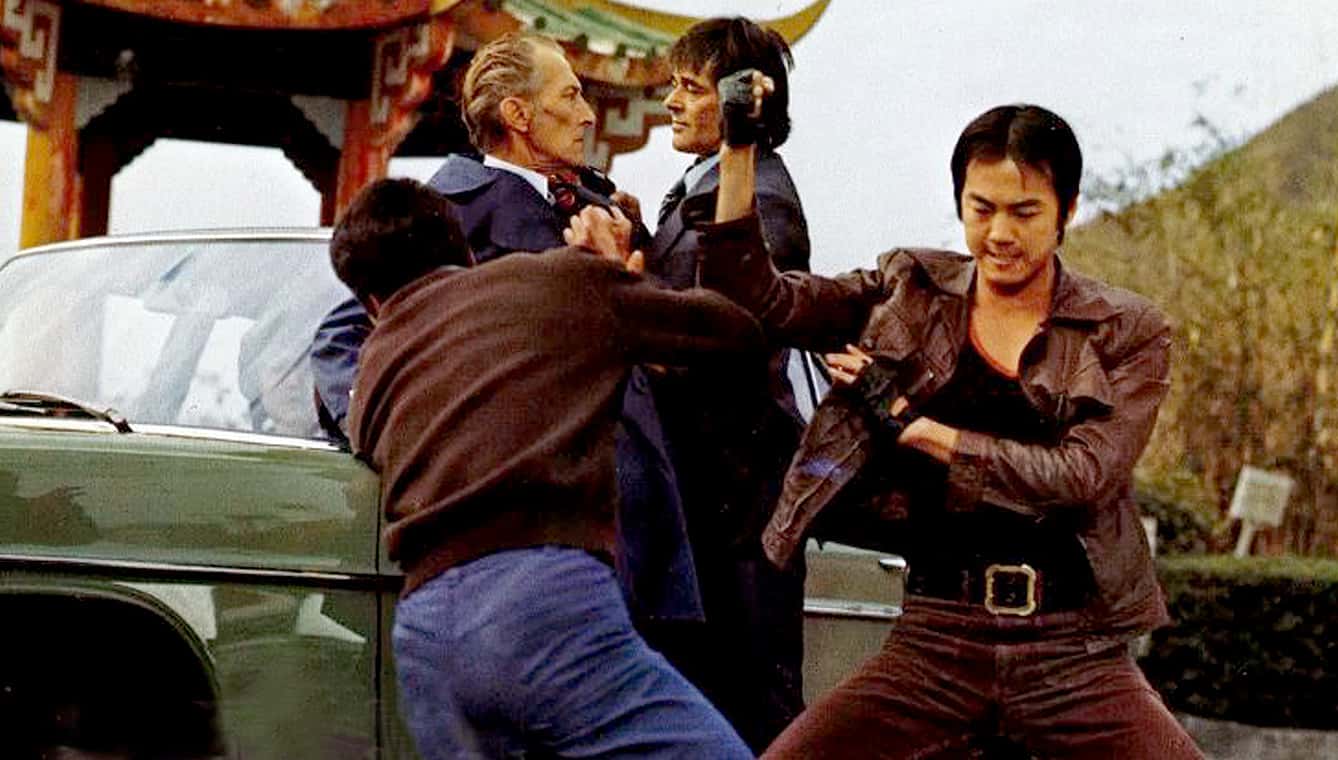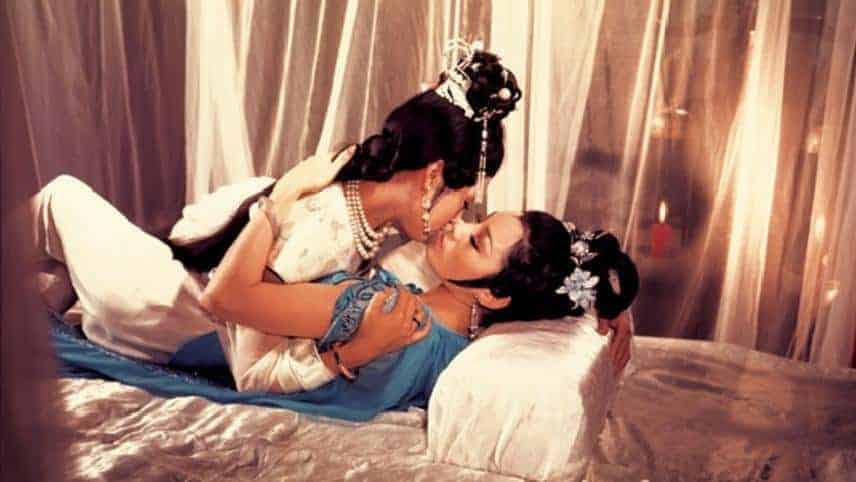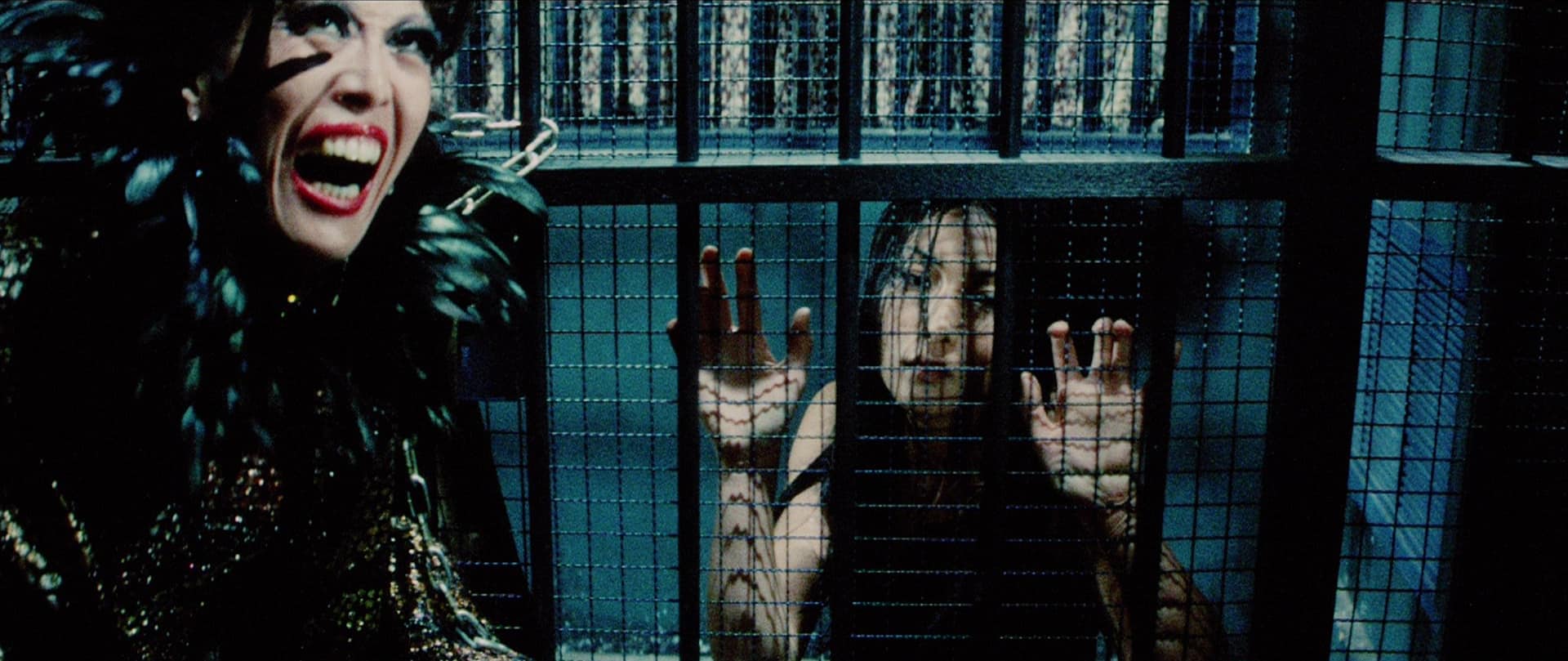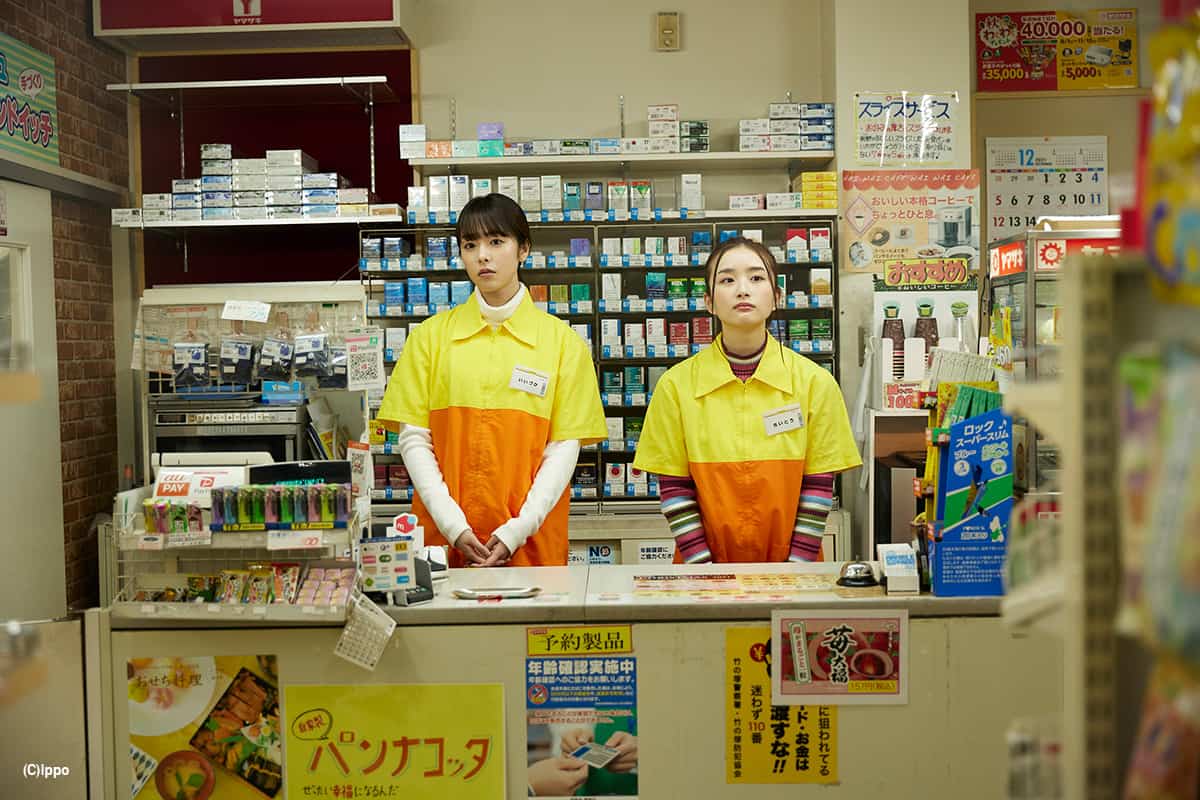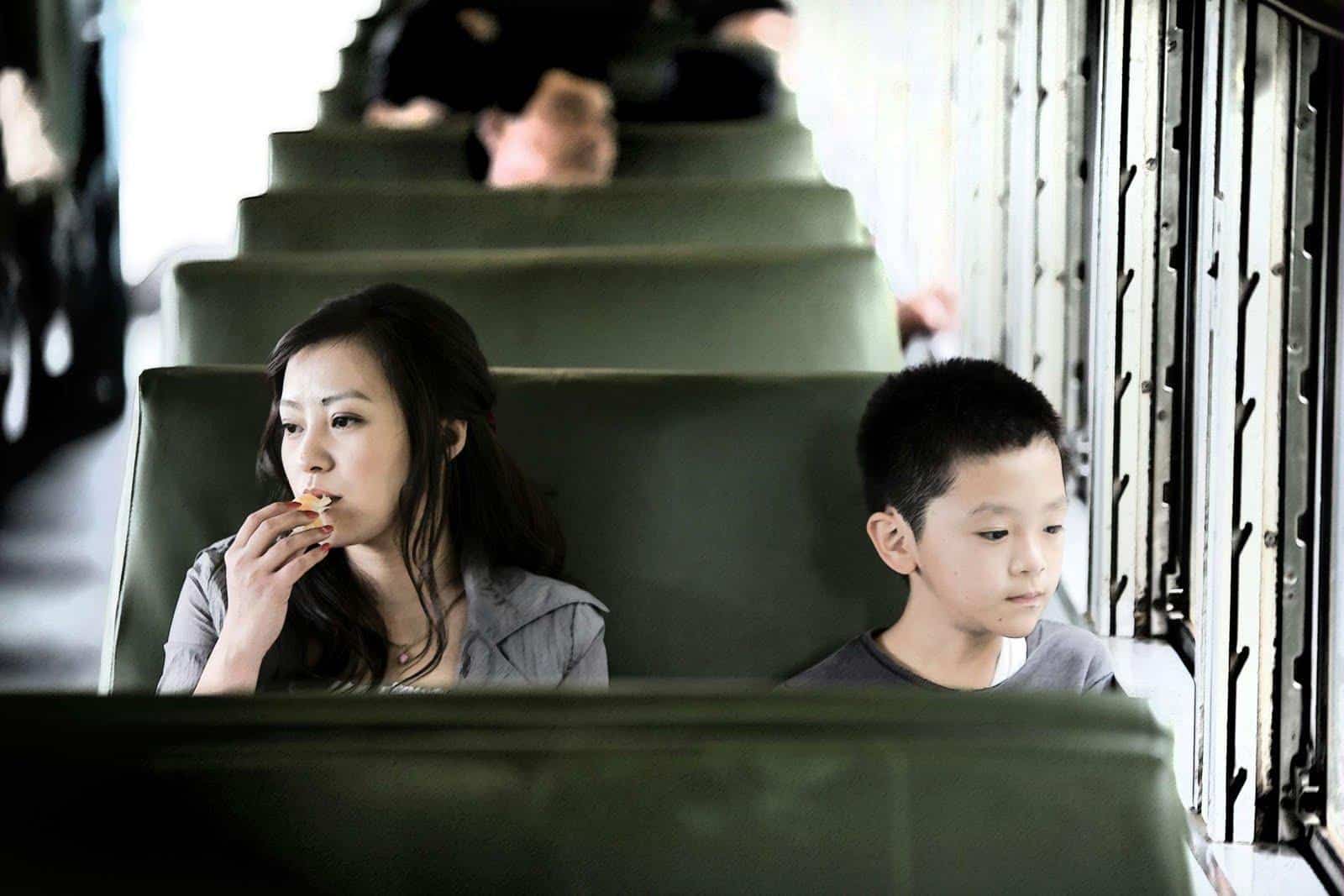The gluttony of films taking inspiration from the work of Japanese genre films was already dying out by the late 2000s, which makes this Taiwanese oddity seem more antiquated than usual with its late 2015 release. Still wildly popular enough to spawn a sequel several years later, this original effort from director Cheng Wei-hao manages to offer up the kind of ‘J-Horror' sensibilities and tactics that were in vogue over a decade earlier, for better or for worse.
“The Tag Along” is screening at Taiwan Film Festival UK

Constantly on the move at work, budding real-estate agent Ho Chih-wei (River Huang, from “Southern Wind”) worries about his grandmother Ho Wen Shu-fang (Liu Yin-shang, from “Sleeping with Her”) with his work habits and failure to adhere to her old upbringing. Ignoring her in favor of his girlfriend Shen Yi-chun (Hsu Wei-ning, from “Who Killed Cock Robin?”) which is just as rocky a relationship, things come to a stop when Ho Wen goes missing from their home which brings them both to look for her. When Chih-wei himself goes missing and Ho Wen returns to the village, Yi-chun finds herself suddenly forced to investigate his disappearance and comes across the local legend of a mosien, a young ghost girl who's dressed in red that foreshadows terrible calamities to others, and quickly finds herself in the sight of the ghost. Trying to save her boyfriend, Yi-chun goes head-to-head with the ghost in order to get him back alive.
“The Tag Along” ends up being quite a decent if flawed effort. One of the brightest aspects here is the rather intriguing storyline from writer Chien Shih-

Once this early setup is accomplished, the later series of jump scares and ghostly interactions becomes all the more intriguing. Directly aping the original legend with the video footage of the girl in the red dress following a group of unknowing hikers in the mountains, these scenes come off nicely mixing together some rather traditional elements with the folklore trappings. These early scenes of the ghost influenceg their dreams with both Chih-wei and Yi-chun getting their own dream-like encounter with the ghost popping up out of nowhere to generate scares or the stand-out hallucination of him supposedly eating bugs and worms instead of a regular meal. These are accomplished in conjunction with the creepy-looking ghost itself that is far more detailed and chilling than the simplified make-up of the original ‘J-Horror' craze looks quite chilling. That is especially evident in the scares of it crawling around on the floor, chasing after them that was originally utilized by those original films. There are some later scenes in the jungle searching for everyone that manage to generate some reasonable suspense with the frantic search based on the earlier knowledge of their interactions with the ghost and the creepy setting is put to good use as well with these frantic scenes. Overall, these are what really hold this one up.
There are some problems with “Tag Along.” The main issue here is the overly familiar feeling that runs throughout the film, mostly centered on the overloaded sense of stylistic choices taken from other movies, most notably the ‘J-Horror' movement. The main scares here are based solely around the sudden shock appearance of the creepy long-hair ghost jumping onto screen screaming loudly, which is quite common and doesn't really do much to help. It's all too familiar with the overall design of the ghost and the CGI-heavy usage later on for the finale that's the main source of disappointment. Taking on a wholly contrived concept of the ghost manipulating the surroundings in their own dream world controlled to torment her victim, this bloated CGI mess of a sequence ruins the great double-take moments before and turns the ending of the film into that over-used setup from those other genre efforts. With the film focused on thinking these elements drive the main fearful aspects instead of its generally captivating storyline, there's a somewhat bland feeling that can emerge at times.

As well, the other big issue here is the rather weak story that tends to be more confusing than anything. Writer Shih-keng offers up a wholly intriguing storyline about a young ghost girl that can foreshadow strange incidents and calamities based on the original legend, yet really doesn't do much with it. Rather than really dig into that premise and utilize that aspect of the storyline with the ghost generating somewhat unusual encounters around the two, the film digs into an investigation subplot that goes nowhere. Going off the basis of the moth found at the site of one of the returned victims and attempting to dig into the history of the ghost sightings in the village should've been much more fun than it is, since this middle section of the film grinds to a halt to showcase her going trough the various sightings with a lame dream encounter thrown into the mix. None of this ties into the ghost they're actually dealing with anyway, and the downtime produced does drag the film down. In the end, this relies more on an intriguing premise more than actually having anything with this ghost and just causes some confusion as for why include that backstory in the first place. These are what hold it down the most.
With most of the positives based around the intriguing ghost at play here, most of the other issues at play in “Tag Along” don't really affect this one much, beyond just being so overly familiar that it doesn't really stand out as much as it should. Give this a chance if you're into these kinds of Asian ghost stories or curious about the film's success, while those looking for more demanding fare or not as interested in that format should heed caution.



